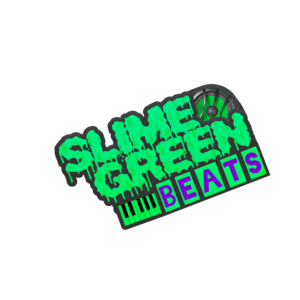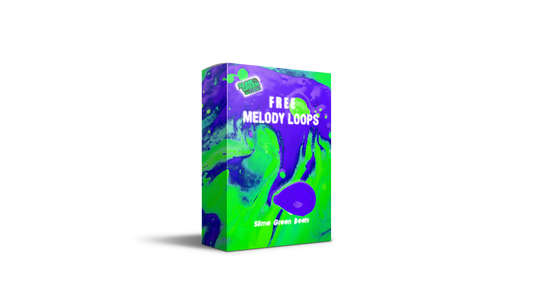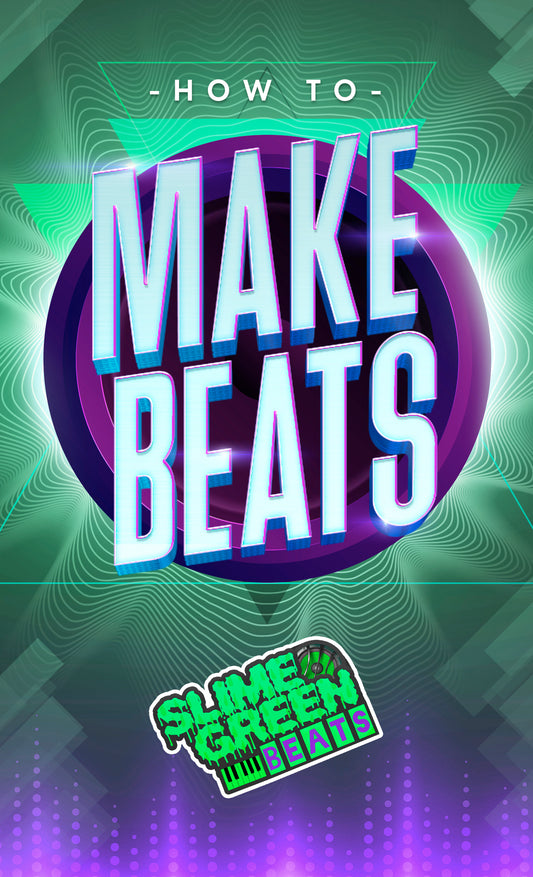If you're diving into the world of music production, especially with FL Studio, you've probably heard about the magic of reggaeton beats. These beats have a unique rhythm and energy that can turn any track into a dancefloor hit. In this guide, we'll break down the steps to mastering FL Studio beatmaking for reggaeton, making it easy for beginners to get started.
Key Takeaways
- FL Studio is an excellent choice for beginners looking to create reggaeton beats.
- Understanding the basics of reggaeton rhythm is crucial to producing authentic tracks.
- Organizing your workspace in FL Studio can greatly enhance your creativity.
- Layering and arranging sounds effectively can add depth to your beats.
- Mixing and mastering are essential steps to ensure your beat sounds professional.
Understanding the Reggaeton Sound

Exploring the Roots of Reggaeton
Reggaeton has grown into a global phenomenon, but its roots are deeply embedded in the cultural tapestry of Latin America. Originating from the vibrant streets of Puerto Rico in the late 1990s, reggaeton was born from a fusion of reggae, dancehall, and Latin rhythms. The genre quickly spread across the Caribbean and Latin American countries, resonating with audiences through its infectious beats and relatable lyrics. Understanding the historical context of reggaeton gives you insight into its unique sound and cultural significance.
Key Elements of a Reggaeton Beat
At the core of any reggaeton track is its distinctive beat, often referred to as "dembow." This rhythm is characterized by a steady, syncopated pattern that creates a danceable groove. Essential elements include:
- Kick Drum: Provides the foundational pulse, driving the track forward.
- Snare & Claps: Add sharpness and accentuate the rhythm.
- Hi-Hats: Introduce texture and complexity to the beat.
Each component plays a crucial role in crafting the signature reggaeton sound, making it both recognizable and irresistible.
Analyzing Popular Reggaeton Tracks
To truly grasp the essence of reggaeton, one must analyze the tracks that have defined the genre. Listen to artists like Daddy Yankee, J Balvin, and Bad Bunny. Their music exemplifies how reggaeton can be both innovative and rooted in tradition. Focus on:
- Rhythmic Patterns: Notice how the "dembow" rhythm is manipulated to create different vibes.
- Melodic Hooks: Pay attention to catchy melodies that captivate listeners.
- Lyrical Themes: Explore the storytelling aspect, often reflecting personal and social narratives.
By dissecting these elements, you can start to appreciate the artistry behind reggaeton and use these insights to inspire your own beat-making journey.
For a more in-depth understanding of music production, including beat-making techniques across genres like reggaeton, consider exploring resources such as this eBook. It offers practical tips and simplifies complex concepts, making them accessible to new creators.
Setting Up Your FL Studio for Success
Getting started with FL Studio can be a game-changer for your reggaeton beats. Here's how to set up your workspace for creativity and efficiency.
Choosing the Right Version of FL Studio
First things first, pick the right version of FL Studio. If you're just starting, the Fruity Edition might be enough. It covers basic needs like MIDI and audio clips. But if you want more features like audio recording and advanced automation, consider the Producer Edition or Signature Bundle. Remember, your choice depends on your production goals.
Essential Tools and Plugins for Reggaeton
To craft those infectious reggaeton beats, you'll need some essential tools and plugins:
- Drum Samples: Look for reggaeton-specific drum kits or create your own.
- Synth VSTs: Plugins like Electra X or Nexus can give you that signature reggaeton sound.
- Effects: Reverb and delay can add depth to your tracks.
Organizing Your Workspace for Creativity
A tidy workspace makes a huge difference. Organize your samples, loops, and plugins so you can find them quickly. Use FL Studio's color coding and naming features to keep your project neat. This way, you spend more time creating and less time searching for files.
Setting up your FL Studio is like laying the foundation for a house. With everything in place, you can focus on building your masterpiece, one beat at a time.
Crafting Authentic Reggaeton Drum Patterns
Selecting the Perfect Drum Sounds
Creating a reggaeton beat starts with picking the right drum sounds. The heartbeat of reggaeton lies in its drums, so you'll want to choose sounds that capture its unique vibe. Look for a solid kick, a sharp snare, and crisp hi-hats. Don't forget to add some percussion elements like congas or bongos to give your beat that authentic feel. Spend time experimenting with different samples until you find a combination that resonates with you.
Creating Compelling Rhythms
Once you've got your sounds, it's time to piece them together into a rhythm that moves. Reggaeton is all about that infectious groove, so focus on crafting a pattern that makes people want to move. Start with a basic dembow rhythm, which is the backbone of many reggaeton tracks. From there, tweak and adjust the timing of your hits to create something unique. Here's a simple process to get you started:
- Lay down your kick drum on beats 1 and 3.
- Add your snare on the off-beats to create a syncopated feel.
- Sprinkle in hi-hats and percussion to fill out the rhythm.
Incorporating Percussion Elements
Percussion is vital in reggaeton, adding layers and depth to your beat. Think about incorporating elements like shakers, maracas, or even a cowbell. These sounds can add texture and make your rhythm more dynamic. Try layering different percussion sounds and playing around with their volume and panning to create a wide and immersive sound. Remember, the goal is to keep the beat interesting without overcrowding it.
Crafting reggaeton drum patterns is about finding the right balance between simplicity and complexity. You want your beat to be catchy and easy to follow, yet rich enough to keep listeners engaged. By focusing on the essentials—sound selection, rhythm creation, and percussion—you'll be well on your way to making beats that not only capture the essence of reggaeton but also stand out in the crowd.
Adding Melodic Elements to Your Beat
Creating a reggaeton beat isn’t just about the drums and bass; it’s also about those catchy melodic elements that make people want to move. This section will guide you through choosing instruments, crafting melodies, and harmonizing with chords.
Choosing the Right Instruments
In reggaeton, the choice of instruments can make or break your beat. Synths, pianos, and guitars are popular choices because they can create the bright, lively sounds that characterize the genre. Don’t be afraid to experiment with different sounds; sometimes, an unexpected instrument can add a unique twist to your track. Consider using virtual instruments if you don’t have access to physical ones. They’re versatile and can be manipulated to fit the vibe you’re going for.
Crafting Memorable Melodies
A memorable melody is often what listeners remember most about a song. Start by establishing a simple motif and build on it. Use your DAW’s piano roll to sketch out ideas, and don’t hesitate to play around with different scales and modes. Remember, a good melody often has a balance between repetition and variation - too much of either can make it boring or chaotic.
Harmonizing with Chord Progressions
Harmonizing your melody with the right chord progressions can add depth and emotion to your beat. Experiment with different chord inversions and voicings to see what complements your melody best. You don’t need to be a music theory expert, but a basic understanding of keys and harmonies will be beneficial. Try layering your chords with different instruments to create a fuller sound. This technique can also help in maintaining listener interest throughout your track.
Bringing melody into your reggaeton beat is like adding color to a black-and-white sketch. It’s where your creativity really shines through and can transform a simple rhythm into a captivating piece of music.
Layering and Arranging Your Sounds
Building Depth with Layering
Layering is like cooking a flavorful dish; the more you add, the richer it becomes. In reggaeton, layering is your secret weapon to create a full-bodied sound. Start by stacking different instruments or sounds on top of each other. For instance, you might layer a bass line with a subtle synth to give it more punch. The key is to ensure these layers complement each other, not clash.
Here's a quick guide to layering:
- Choose contrasting sounds: This helps in defining each layer clearly.
- EQ each layer: Use equalization to carve out space for each sound, preventing muddiness.
- Experiment with volume levels: Balance is crucial; some layers should sit in the background while others take the forefront.
Arranging for Maximum Impact
Arranging your track is like telling a story. You want to keep your listeners engaged from start to finish. Think of your beat as having different chapters, each with its own vibe but contributing to the overall narrative.
Follow these steps for impactful arrangement:
- Intro: Set the scene with a simple melody or rhythm that hints at what's to come.
- Verse: Introduce complexity by adding more layers or changing rhythms.
- Chorus: This is your track's climax. Make it memorable with catchy hooks or a powerful beat.
- Bridge: Offer a change of pace to keep things interesting before returning to the chorus.
- Outro: Wind down the energy, leaving a lasting impression.
Balancing Complexity and Simplicity
In music production, less is often more. While it's tempting to add endless layers and effects, sometimes simplicity speaks louder. Strive for a balance where your track is interesting but not overwhelming.
Consider these tips:
- Limit your sound palette: Too many sounds can confuse the listener.
- Use repetition wisely: Repeated elements can be catchy, but don't overdo it.
- Focus on transitions: Smooth transitions between sections help maintain flow.
"In the world of music, sometimes the spaces between the notes are as important as the notes themselves. Let your track breathe and give each element room to shine."
For those looking to explore enchanting melodies, the "Wonderland" Melody Loops Pack by Slime Green Beats offers a treasure trove of sounds that can add a magical touch to your reggaeton beats. With 38 high-quality loops, it's perfect for both beginners and seasoned producers seeking instant inspiration.
Mastering the Art of Mixing and Mastering
Achieving Clarity with EQ and Compression
Mixing and mastering are like the final polish for your reggaeton beats. You want every sound to shine, and EQ (equalization) is your best friend here. Think of EQ as a sculpting tool—it helps you carve out the perfect space for each element in your track. You'll want to adjust the frequency ranges to avoid clashing sounds. For example, if your bass is overpowering your vocals, you can lower the bass frequencies a bit to make room. Compression, on the other hand, helps balance the dynamics. If your drums are too punchy, compressing them can even things out. The key is subtlety—overdoing it can squash the life out of your track.
Enhancing Your Mix with Effects
Once you have the basics down, it's time to add some spice with effects. Reverb can add depth, making your track feel like it's in a larger space. Delay can create interesting echoes, adding complexity to your beats. Don't forget about stereo imaging—this can make your track feel wider and more immersive. Use effects to highlight important elements, but keep them in check. You don't want your mix to sound cluttered.
Finalizing Your Beat for Distribution
Before you share your masterpiece with the world, you need to master it. This is where you ensure your track sounds good on any speaker, from your phone to a club sound system. Tools like Master Assistant can help you achieve industry-standard volume levels. It's also a good idea to listen to your track on different devices to catch any inconsistencies. Once you're satisfied, you're ready to release your beat and let it make waves.
Promoting and Sharing Your Reggaeton Beats

Utilizing Social Media Platforms
Social media is your best friend when it comes to getting your reggaeton beats heard. Platforms like Instagram, TikTok, and Facebook allow you to connect directly with your audience. Create engaging content that showcases your beats, whether it's a short video of you working in FL Studio or a behind-the-scenes look at your creative process. Consistency is key—regular posts keep your audience engaged and excited about your music. Don't forget to use relevant hashtags to increase your visibility.
Collaborating with Other Artists
Collaboration can be a game-changer. Reach out to vocalists, rappers, and fellow producers who share your passion for reggaeton. Working together not only broadens your creative horizons but also introduces your music to new audiences. Consider joining online communities or forums where you can meet like-minded artists. Remember, every collaboration is a chance to learn something new and improve your craft.
Engaging with Your Audience
Building a loyal fanbase requires genuine interaction. Respond to comments on your posts, ask for feedback, and show appreciation for your listeners' support. Hosting live sessions where you can interact with your audience in real-time is a great way to build a personal connection. Encourage your fans to share your beats and offer incentives like exclusive content or shoutouts.
"Engagement is not just about broadcasting your music; it's about creating a community around it."
To get your music out there, consider exploring unique music promotion companies that can help elevate your visibility in the industry. These companies offer tailored services to boost your presence and success as an artist.
If you want to get your reggaeton beats out there, it's time to take action! Share your music on social media, collaborate with other artists, and connect with fans. Don't forget to visit our website for more tips and to explore our amazing beats that can help you shine!
Conclusion
So there you have it, folks! You've got the basics down for making killer reggaeton beats in FL Studio. It's all about experimenting, having fun, and letting your creativity flow. Don't worry if it doesn't sound perfect right away. Keep tweaking, keep learning, and most importantly, keep jamming. Share your beats, get feedback, and watch yourself grow as a producer. Remember, every pro was once a beginner. So grab your headphones, fire up FL Studio, and start creating those beats that make people want to dance. You've got this!
Frequently Asked Questions
What is the reggaeton sound?
Reggaeton is a music style that blends Latin rhythms with hip-hop and reggae. It often features catchy drum patterns and melodies.
How do I choose the right version of FL Studio for reggaeton?
Pick a version that fits your needs and budget. For beginners, the Producer Edition is a good start as it offers a wide range of features.
What are the key elements of a reggaeton beat?
A reggaeton beat usually includes a steady drum rhythm, bassline, and catchy melodies. Percussion elements add extra flair.
How can I make my reggaeton beats sound professional?
Focus on mixing and mastering. Use EQ, compression, and effects to balance your track and give it a polished sound.
What tools and plugins are essential for making reggaeton beats?
You'll need a good DAW like FL Studio, along with plugins for drums, synths, and effects to create diverse sounds.
How can I share my reggaeton beats with others?
Use platforms like SoundCloud or YouTube. Engaging on social media and collaborating with other artists can also help spread your music.








